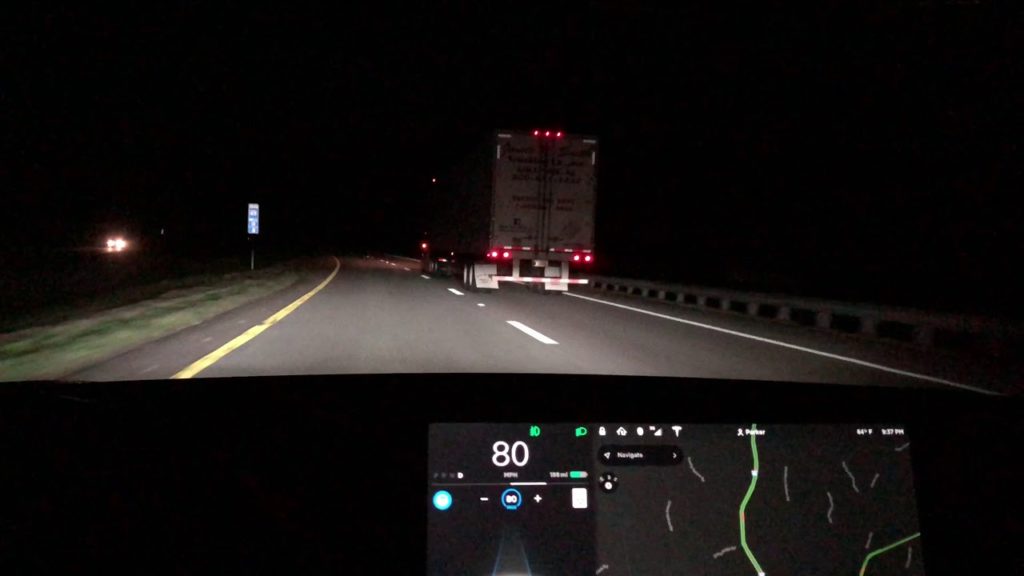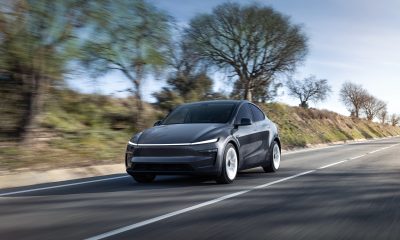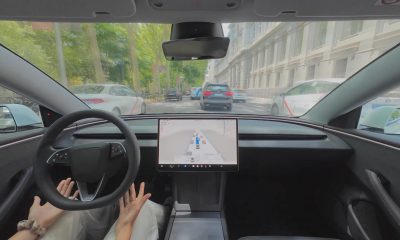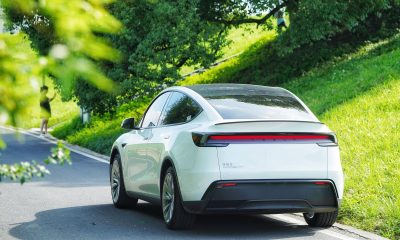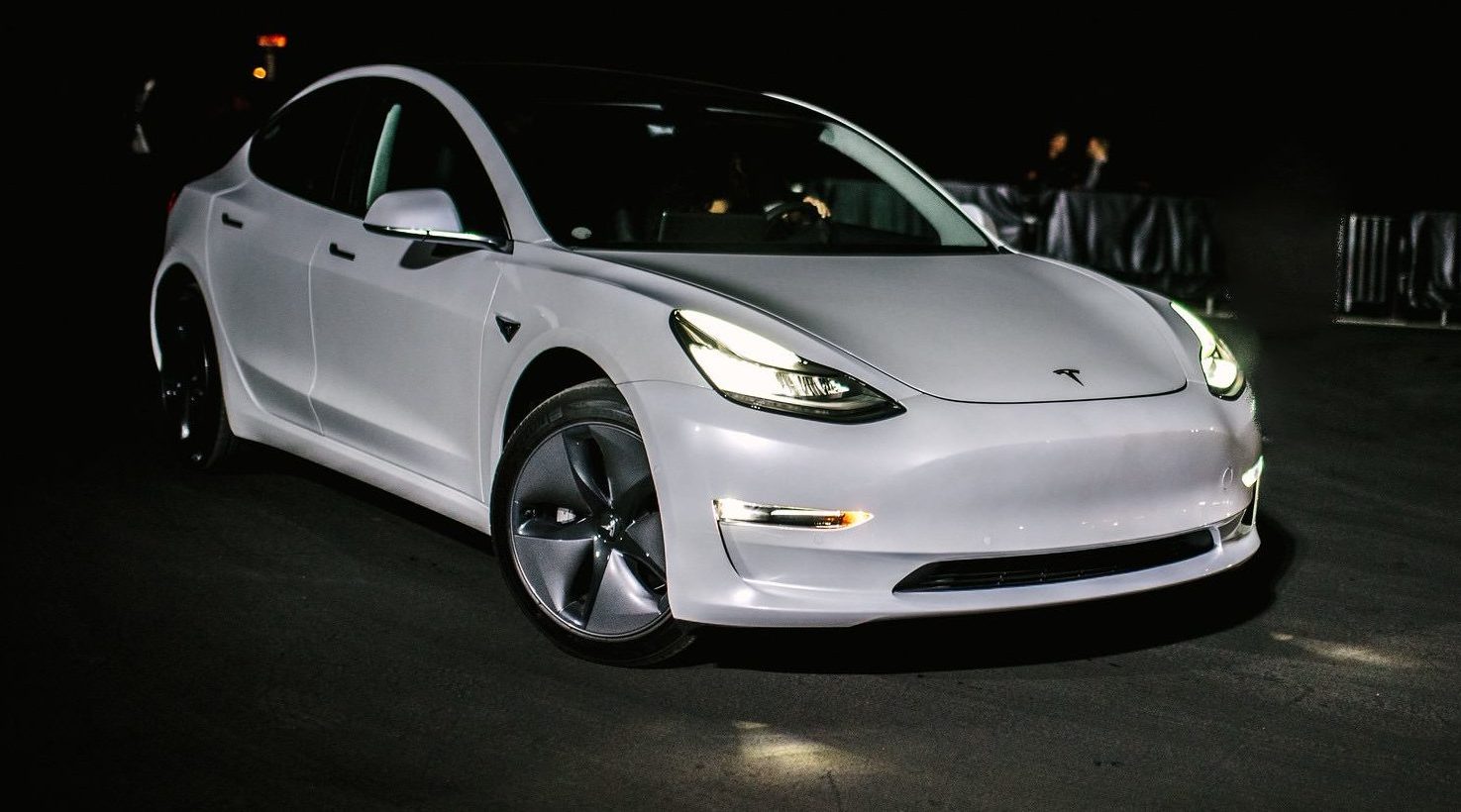

News
No, Tesla wasn’t “cheated” in the Model 3 headlight safety test by the IIHS
With the Insurance Institute for Highway Safety’s release of initial crash test information for the Tesla Model 3 came cries from many in the electric vehicle community that Tesla was “being cheated.” This isn’t entirely true as the new IIHS test removes a lot of cars out of the Top Safety Pick+ rating, the highest accolade the independent safety tester will give a car.
The Insurance Institute for Highway Safety (IIHS) is an independent testing organization funded by insurance companies and some of the banks who back them. The IIHS purchases every car it tests–usually several of each–and tests these vehicles in their highest-available safety configuration. These crash tests usually destroy the vehicles in question, of course, but give an independent, third-party result not otherwise available.
When the IIHS’ initial safety results for the Tesla Model 3 were released, they included ratings for only two of the seven total ratings given to a vehicle. Those ratings, posted to the IIHS.org website, created a lot of response from the community regarding the failure of the Model 3’s headlamps to pass muster.
The tests so far include only the non-invasive, non-destructive tests normally conducted by the IIHS. Namely to crash mitigation systems and headlamps. It’s likely that the next test to see release on the Model 3 will be for LATCH child safety system use, another non-destructive test. From there, crash testing will begin. For that, IIHS needs to receive more Model 3 vehicles (5 in all), the rest of which are on order and expected later this year. Like any other Model 3 buyer, delays in manufacturing have put the IIHS’ ownership of the cars for evaluation on hold.
How the IIHS Conducts Headlight Tests, and Why
The IIHS conducts headlamps tests because, according to the organization, about half of all fatal crashes in the U.S. occur in the dark and many of those are on unlit roads where headlamps are the only thing illuminating whatever’s in front of the car. Although headlights are mandatory and minimum illumination requirements are required by law for all street-legal vehicles, there is a wide variance in how much (and how useful) that illumination can be. Especially with the advent of new lighting technologies.
“Headlight technology has been developing rapidly in recent years. LED and high-intensity discharge (HID) lamps have begun to replace the traditional halogen ones,” IIHS explains on its website. “Many automakers offer curve-adaptive headlights, which respond to steering and swivel according to the direction of travel. Many also offer high-beam assist, a feature that can increase the use of high beams..” These and other variables mean that headlights of the same type on one vehicle can be much worse than they can on another. Even little things like how the lights are focused, what type of light they emit, etc. can change effectiveness.
For those reasons, the IIHS instituted a headlight testing methodology in 2016. Starting this year (2018), these test results directly affect a vehicle’s eligibility for Top Safety Pick+ status. So far in 2018, only a handful of models have received TSP+ ratings. Somewhat surprising for luxury and high-end car buyers is the fact that almost all of those TSP+ vehicles are lower-end vehicles from makes like Hyundai and Subaru.
Testing for headlamps is conducted using a multi-part evaluation using a hypothetical, clear, two-lane road. The tests include measurements in a straightaway, measuring both the length and amount of illumination as well as the amount of glare the lights create for oncoming drivers. Then a gradual left- and right-hand turn and a steeper left- and right-hand curve are measured for a total of five directions in all.
Results are taken from varied distances at 10 inches high and 3-feet, 7-inches high (from the ground) to mimic where the driver is looking (out and down) and where oncoming vehicle drivers are seeing from (higher up). Ratings are then assigned according to how these measurements line up with a hypothetical ideal headlight system. Both low and high beams are tested the same way with the low beams being weighted for scoring as they are used most often in the real world. Vehicles with automatic high beam systems are given more points as the high beams will be used more often.
The Controversy Surrounding the IIHS Headlight Test
The inherent weakness in this IIHS test is similar to that of most of its advanced testing: it’s only tested on the ideal vehicle trim level and options. In other words, the testing is most likely happening on the most expensive model being sold, not necessarily on the most mainstream version of the vehicle. This becomes obvious when the bulk of the Top Safety Pick+ list is comprised of vehicles like the 2018 Subaru WRX.
The WRX is a great car, sure; a personal favorite in fact. But its winning of a TSP+ badge is a little misleading. The volume-selling model WRX is the mid-tier Premium trim, which doesn’t include the LED headlights or the automatic high beam control tested by the IIHS. To get those, one has to go up to the more expensive Limited trim point and add the EyeSight system. That latter point can only come if the buyer of this driver’s car is willing to drop their manual transmission for a CVT. That’s another sticking point as the WRX has a large percentage of buyers who want to shift the gears themselves.
What all of this means is that the 2018 WRX is a great car, but it’s not likely to be purchased in the configuration which the IIHS used to test its headlamps with. Other cars on the TSP+ list are much the same.
The interesting note here is that unlike actual crash tests, the slightly more subjective headlamp tests of the IIHS fall into the non-destructive tests for other safety equipment that, while respected, are also flawed for the same reason: only top-end models tend to have all of that equipment on them. Unlike those other safety items, however, the headlamp tests can hurt higher-end models while lower-end options would ace them. Why? Because LED headlamps, which consistently appear to fail most of the glare testing that the IIHS does, are generally only found on top-end models or luxury vehicles. There could be a lot of reasons for that, but my personal theory is that it has to do with automakers having to find a median between maximum safe illumination and glare due to how reflective LED lamps are designed.
The current IIHS Top Safety Pick+ list includes no midsize luxury cars (which the Model 3 is considered), though the overall midsize car category has five entries. All of them with caveats as to what must be included (usually top trim point items or options). Last year, under the old rules, most midsize and midsize luxury cars made the TSP+ list and Tesla’s Model S failed to make the list in part, again, for headlights.
It’s difficult to say what will happen with the Insurance Institute’s testing going forward. Likely manufacturers will come up with solutions to receive better scores on the headlamps test, perhaps by changing LED lighting designs or gaming the IIHS tests (as they have in the past with the small front overlap).
Tesla has some smart engineers and could probably figure out a way to remedy the lighting problem that’s kept their vehicles from rating high on IIHS tests in recent years. With a mainstream attempt like the Model 3, that could become a very important goal as buyers in the midsize sedan category tend to be safety conscious consumers.
News
Tesla UK sales see 14% year-over-year rebound in June: SMMT data
The SMMT stated that Tesla sales grew 14% year-over-year to 7,719 units in June 2025.

Tesla’s sales in the United Kingdom rose in June, climbing 14% year-over-year to 7,719 units, as per data from the Society of Motor Manufacturers and Traders (SMMT). The spike in the company’s sales coincided with the first deliveries of the updated Model Y last month.
Model Y deliveries support Tesla’s UK recovery
Tesla’s June performance marked one of its strongest months in the UK so far this year, with new Model Y deliveries contributing significantly to the company’s momentum.
While the SMMT listed Tesla with 7,719 deliveries in June, independent data from New AutoMotive suggested that the electric vehicle maker registered 7,891 units during the month instead. However, year-to-date figures for Tesla remain 2% down compared to 2024, as per a report from Reuters.
While Tesla made a strong showing in June, rivals are also growing. Chinese automaker BYD saw UK sales rise nearly fourfold to 2,498 units, while Ford posted the highest EV growth among major automakers, with a more than fourfold increase in the first half of 2025.
Overall, the UK’s battery electric vehicle (BEV) demand surged 39% to to 47,354 units last month, helping push total new car sales in the UK to 191,316 units, up 6.7% from the same period in 2024.
EV adoption accelerates, but concerns linger
June marked the best month for UK car sales since 2019, though the SMMT cautioned that growth in the electric vehicle sector remains heavily dependent on discounting and support programs. Still, one in four new vehicle buyers in June chose a battery electric vehicle.
SMMT Chief Executive Mike Hawes noted that despite strong BEV demand, sales levels are still below regulatory targets. “Further growth in sales, and the sector will rely on increased and improved charging facilities to boost mainstream electric vehicle adoption,” Hawes stated.
Also taking effect this week was a new US-UK trade deal, which lowers tariffs on UK car exports to the United States from 27.5% to 10%. The agreement could benefit UK-based EV producers aiming to expand across the country.
News
Tesla Model 3 ranks as the safest new car in Europe for 2025, per Euro NCAP tests
Despite being on the market longer than many of its rivals, the Tesla Model 3 continues to set the bar for vehicle safety.

The Tesla Model 3 has been named the safest new car on sale in 2025, according to the latest results from the Euro NCAP. Among 20 newly tested vehicles, the Model 3 emerged at the top of the list, scoring an impressive 359 out of 400 possible points across all major safety categories.
Tesla Model 3’s safety systems
Despite being on the market longer than many of its rivals, the Tesla Model 3 continues to set the bar for vehicle safety. Under Euro NCAP’s stricter 2025 testing protocols, the electric sedan earned 90% for adult occupant protection, 93% for child occupant protection, 89% for pedestrian protection, and 87% for its Safety Assist systems.
The updated Model 3 received particular praise for its advanced driver assistance features, including Tesla’s autonomous emergency braking (AEB) system, which performed well across various test scenarios. Its Intelligent Speed Assistance and child presence detection system were cited as noteworthy features as well, as per a WhatCar report.
Other notable safety features include the Model 3’s pedestrian-friendly pop-up hood and robust crash protection for both front and side collisions. Euro NCAP also highlighted the Model 3’s ability to detect vulnerable road users during complex maneuvers, such as turning across oncoming traffic.
Euro NCAP’s Autopilot caution
While the Model 3’s safety scores were impressive across the board, Euro NCAP did raise concerns about driver expectations of Tesla’s Autopilot system. The organization warned that some owners may overestimate the system’s capabilities, potentially leading to misuse or inattention behind the wheel. Even so, the Model 3 remained the highest-scoring vehicle tested under Euro NCAP’s updated criteria this year.
The Euro NCAP’s concerns are also quite interesting because Tesla’s Full Self-Driving (FSD) Supervised, which is arguably the company’s most robust safety suite, is not allowed for public rollout in Europe yet. FSD Supervised would allow the Model 3 to navigate inner city streets with only minimal human supervision.
Other top scorers included the Volkswagen ID.7, Polestar 3, and Geely EX5, but none matched the Model 3’s total score or consistency across categories. A total of 14 out of 20 newly tested cars earned five stars, while several models, including the Kia EV3, MG ZS, and Renault 5, fell short of the top rating.
Elon Musk
Why Tesla’s Q3 could be one of its biggest quarters in history
Tesla could stand to benefit from the removal of the $7,500 EV tax credit at the end of Q3.

Tesla has gotten off to a slow start in 2025, as the first half of the year has not been one to remember from a delivery perspective.
However, Q3 could end up being one of the best the company has had in history, with the United States potentially being a major contributor to what might reverse a slow start to the year.
Earlier today, the United States’ House of Representatives officially passed President Trump’s “Big Beautiful Bill,” after it made its way through the Senate earlier this week. The bill will head to President Trump, as he looks to sign it before his July 4 deadline.
The Bill will effectively bring closure to the $7,500 EV tax credit, which will end on September 30, 2025. This means, over the next three months in the United States, those who are looking to buy an EV will have their last chance to take advantage of the credit. EVs will then be, for most people, $7,500 more expensive, in essence.
The tax credit is available to any single filer who makes under $150,000 per year, $225,000 a year to a head of household, and $300,000 to couples filing jointly.
Ending the tax credit was expected with the Trump administration, as his policies have leaned significantly toward reliance on fossil fuels, ending what he calls an “EV mandate.” He has used this phrase several times in disagreements with Tesla CEO Elon Musk.
Nevertheless, those who have been on the fence about buying a Tesla, or any EV, for that matter, will have some decisions to make in the next three months. While all companies will stand to benefit from this time crunch, Tesla could be the true winner because of its sheer volume.
If things are done correctly, meaning if Tesla can also offer incentives like 0% APR, special pricing on leasing or financing, or other advantages (like free Red, White, and Blue for a short period of time in celebration of Independence Day), it could see some real volume in sales this quarter.
You can now buy a Tesla in Red, White, and Blue for free until July 14 https://t.co/iAwhaRFOH0
— TESLARATI (@Teslarati) July 3, 2025
Tesla is just a shade under 721,000 deliveries for the year, so it’s on pace for roughly 1.4 million for 2025. This would be a decrease from the 1.8 million cars it delivered in each of the last two years. Traditionally, the second half of the year has produced Tesla’s strongest quarters. Its top three quarters in terms of deliveries are Q4 2024 with 495,570 vehicles, Q4 2023 with 484,507 vehicles, and Q3 2024 with 462,890 vehicles.
-

 Elon Musk4 days ago
Elon Musk4 days agoTesla investors will be shocked by Jim Cramer’s latest assessment
-

 News1 week ago
News1 week agoTesla Robotaxi’s biggest challenge seems to be this one thing
-

 Elon Musk2 weeks ago
Elon Musk2 weeks agoFirst Look at Tesla’s Robotaxi App: features, design, and more
-

 News2 weeks ago
News2 weeks agoSpaceX and Elon Musk share insights on Starship Ship 36’s RUD
-

 News2 weeks ago
News2 weeks agoWatch Tesla’s first driverless public Robotaxi rides in Texas
-

 News1 week ago
News1 week agoWatch the first true Tesla Robotaxi intervention by safety monitor
-

 News2 weeks ago
News2 weeks agoTesla has started rolling out initial round of Robotaxi invites
-

 Elon Musk2 weeks ago
Elon Musk2 weeks agoTesla to launch in India in July with vehicles already arriving: report

